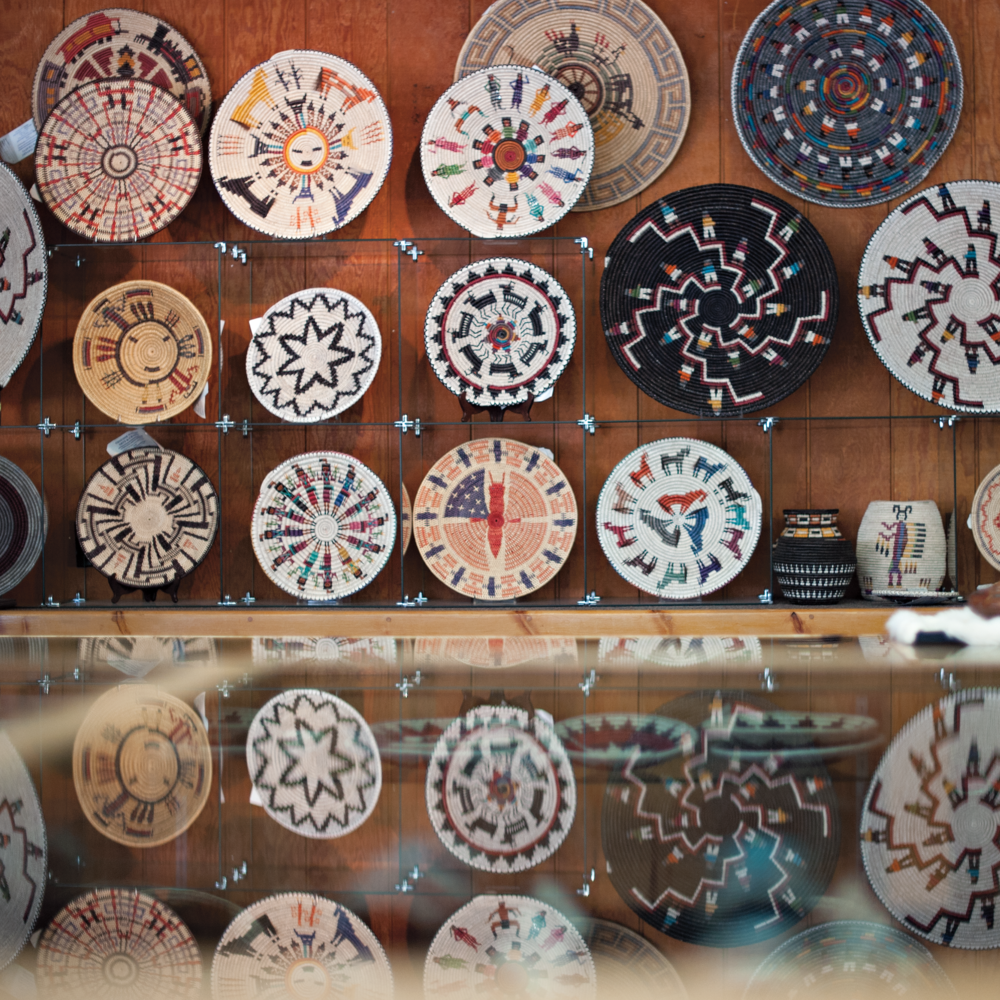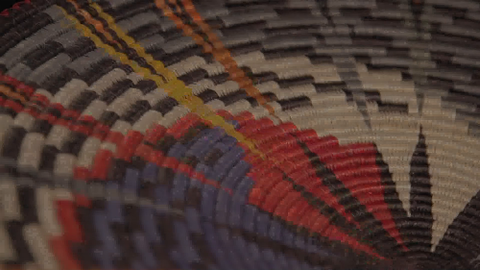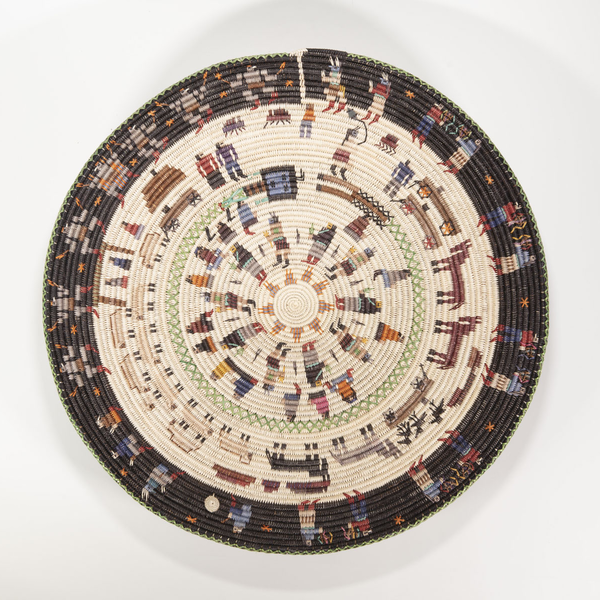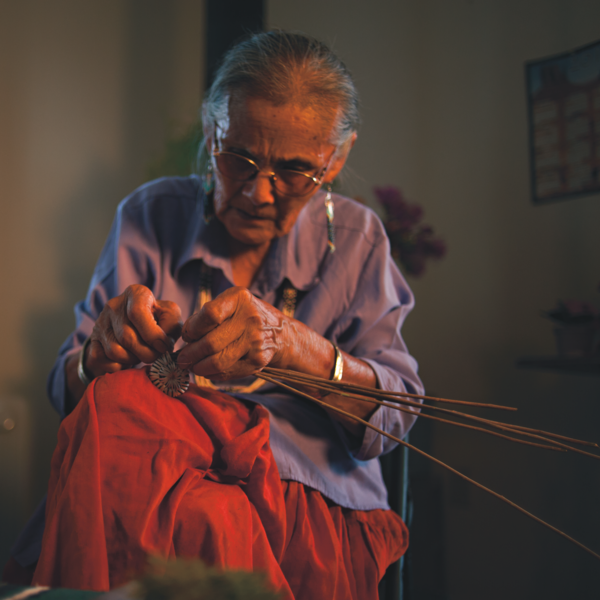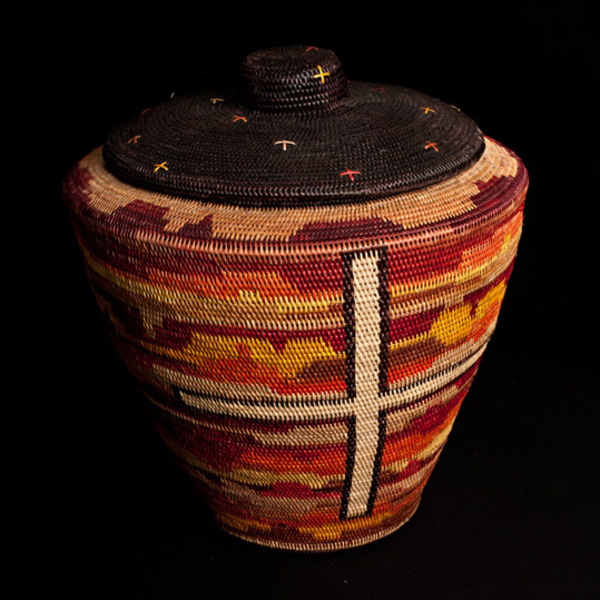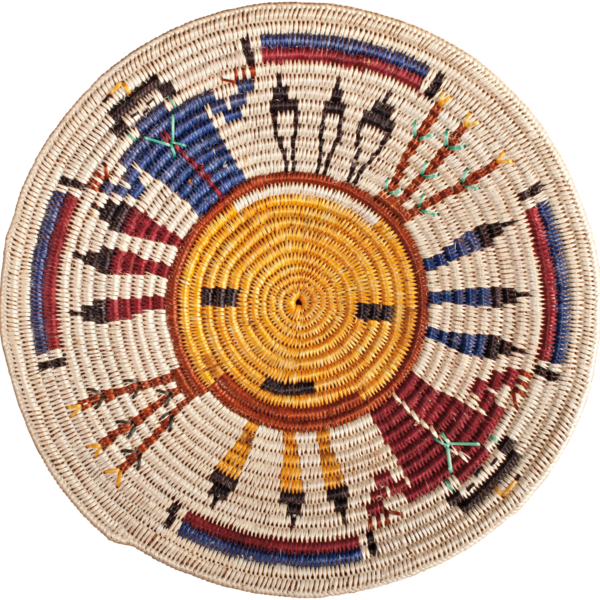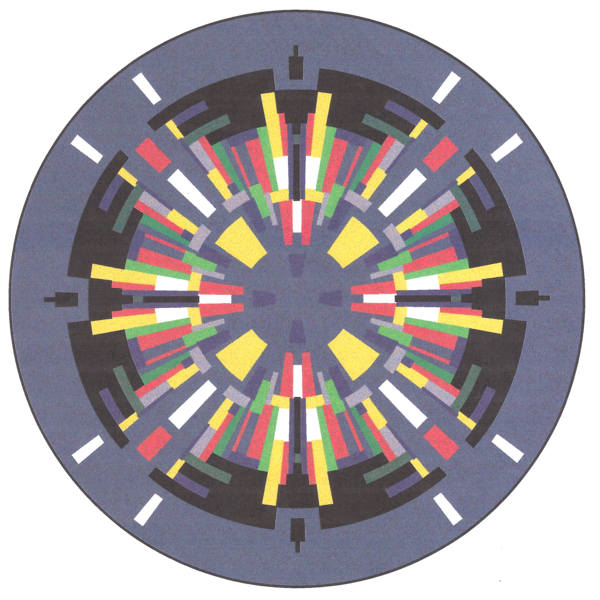Navajo Basket Revolution
Beginning in the 1970s, when basketmaking was considered a nearly extinct art among the Diné (Navajo), a small group of weavers began producing baskets that represented a shift in established ways of thinking and doing things. Carrying forward the ancient form and materials of the ts’aa’ (ceremonial basket), weavers began to experiment with new designs influenced by ancient pottery patterns, rug designs, and human and animal figures. Later weavers began to incorporate representations of sacred sand paintings, stories, and ceremonies into their work. Encouraged by traders such as Virginia “Chin” Smith of the Oljato Trading Post and Barry and Steve Simpson of Twin Rocks Trading Post, weavers, including Mary Holiday Black and many others in Tsé Bii’nidzisgai (Monument Valley), reinvigorated basketmaking and developed a new form of art. This basket revolution was created by artists in a dynamic culture, fueled by cross-cultural collaborations, and shaped by market forces.
